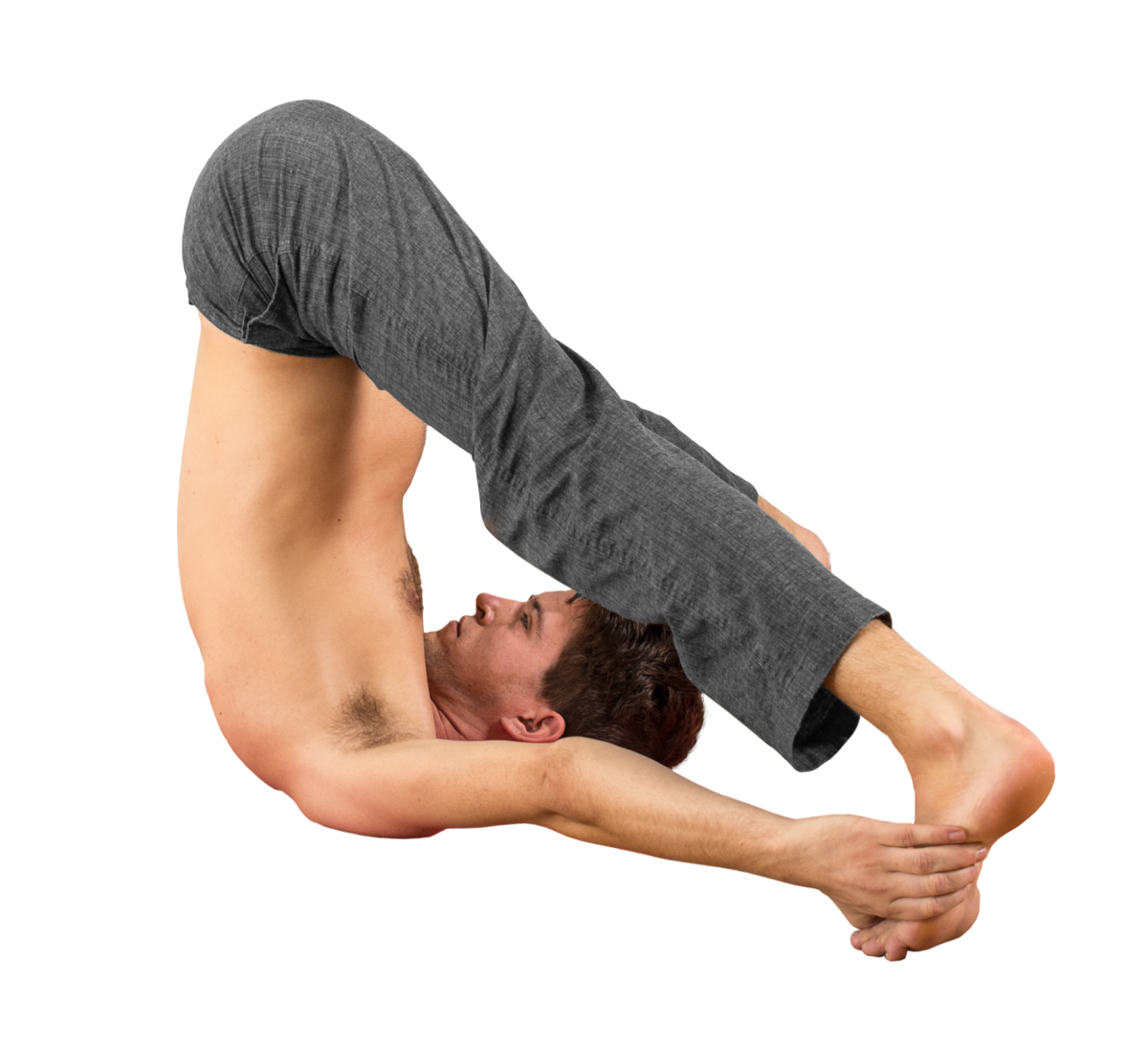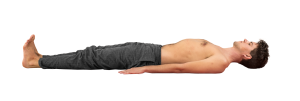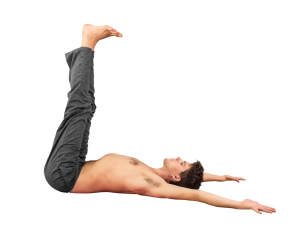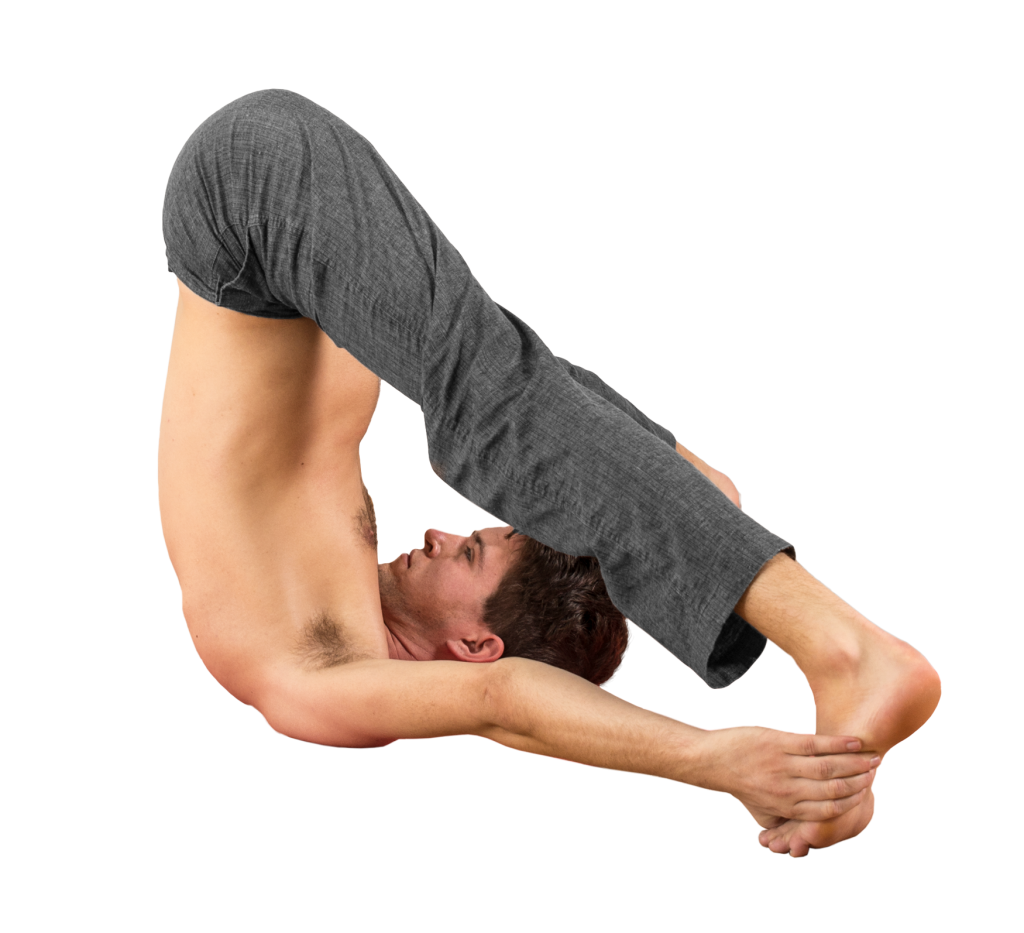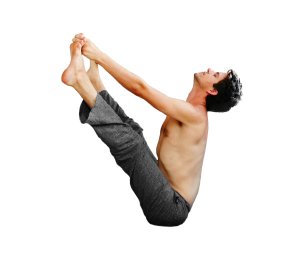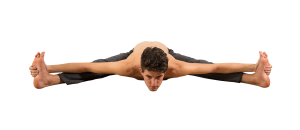Supta Konasana
- Supta: Sleeping
- Kona: Angle
- Asana: Pose
Supta Konasana is the twenty-sixth pose of the primary series, and the twenty-second seated pose. It is the first introduction to the sarvangasana (“shoulderstand”) pattern of postures.
FOCUS ON…
Follow the vinyasa: the method of entering this asana is important. Many practitioners are tempted to roll into Supta Konasana with momentum rather than strength. Not only does this bypass one of the major purposes of this movement, it exposes the neck to greater risk of injury. This asana must be done correctly; if correct alignment and vinyasa is impossible, further preparation in earlier asana is necessary.
The weight of the body ought to be balanced on the shoulder blades, not on the vertebrae or skull. For this to happen, the shoulder blades must be elevated. (Elevation is the action of shrugging the shoulders towards the ears.)
To ensure this action, the arms should be lifted overhead before rolling back. The arms lengthen and reach back to ensure full elevation of the scapula.
If this is not done sufficiently, the weight of the body and pressure will be placed on the spine, especially the C7 vertebrae, and the posture is deleterious for the health of the spine.
Once balanced, with the hands holding the feet, the balls of the feet and toes should be pressing into the floor. The hips anteriorly rotate to straighten (move towards extension) the spine. This is the action of the sitting bones turning towards the ceiling; the feet come closer to the head. The spine should be in a relatively neutral alignment (except the neck), not deeply flexed.
Press the back of the skull gently into the floor to encourage the natural arch of the cervical spine. This action will lift the chin slightly away from the chest; there ought to be a slight gap between the chin and sternum. The traditional gazing point for this asana is nāsāgre (at the navel). However, spinal alignment is typically improved by gazing towards the eyebrows (bhrūmadhye) for the first few months of practicing this asana.
After five breaths, rock forward while exhaling firmly. Flex the spine, press off with the toes, and use the strength of the hamstrings & legs to rock smoothly. Balance just forward of the coccyx (between the tailbone and sitting bones) for one breath. As you come to the balance point, inhale and lift your chest and straighten your spine to stop your forward movement.
When exhaling to set down, be sure to land on your calves not your heels. If you’re unable to control your landing and bang your heels, instead release your grip on your feet and lower your legs slowly.
Vinyasa of the Pose
The breath is a major ally here. It is important to use the breath and the bandha, and even to exaggerate them. Shyness with the breath makes this vinyasa more challenging than necessary.
From Sat, jump through and land in Dandasana.
Exhaling, keep the hands pressing into the floor by your hips and lay down slowly.
Inhale, reach the arms up overhead, angled approximately 60°.
As the next exhalation leaves the body, lift straight legs off the ground, lift the hips, and place the feet in the hands smoothly. Five breaths here; this is the state of the asana.
Exhale strongly, curl in, and rock forward to balance. Inhale as you find your balance point. Gaze upwards.
Exhale, set down and fold forward.
Inhale, sit up.
Exhale, take vinyasa.
ALTERNATIVES & SOLUTIONS
If you’re unable to follow the vinyasa as described, don’t try “workarounds” here. Neck injury is likely for unprepared practitioners; at the very least, if not injurious, the asana will be dull and pointless.
Work instead on preceding asana, especially: Surya Namaskara, lifting for the connective vinyasa, Navasana, Bhujapidasana, Garbha Pindasana.

